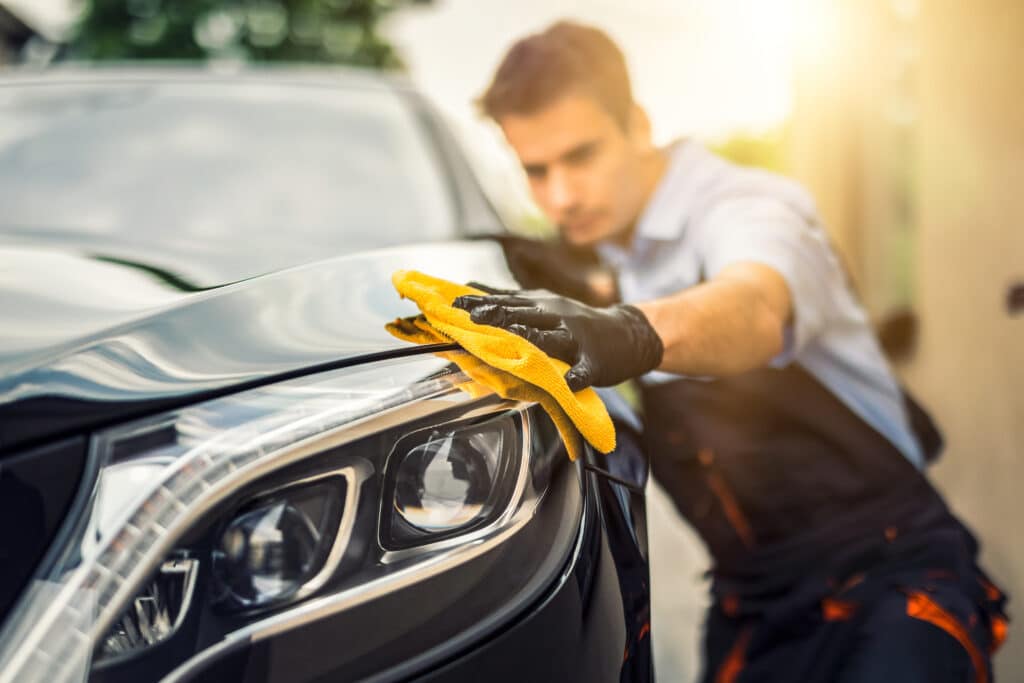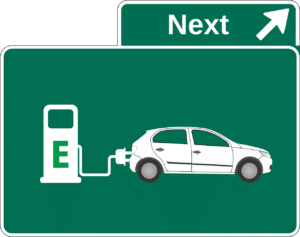Options. It’s a word you hear quite a bit when you’re in the market for a vehicle. Who doesn’t like options in life? Unfortunately, vehicle options are notoriously expensive, and some are just not needed when purchasing that new ride. All of the unnecessary add-ons you buy when purchasing your new vehicle balloon up your monthly payments. However, some options are worth it, so we’ll look at one in particular for this post, new auto paint protection.
A Little About Auto Paint Protection
Auto paint protection comes in several types, wax, synthetic sealants, ceramic or glass coatings, and films. The particular kind of auto paint protection we’re talking about is a spray addition to new vehicles only. This protection is a clear coat of protection sprayed over the paint job designed to seal over the paintwork on a new car for extra protection before taking your new car home. The coating helps keep your vehicle free of damage from natural occurrences like UV rays, tree sap, bird droppings. However, some dealerships claim that this option protects from heavier damage like rock chips, but the jury is still out on this. Paint protection does a useful job in certain situations, but just how much it protects and whether some claims made by manufacturers and sellers stand up to examination is another matter.
Is Auto Paint Protection Worth It?
Dealerships utilize their aftermarket department, the department that sells paint protection and other aftermarket products, to add more money into the deal if the dealership doesn’t make as much selling you a car. But that doesn’t mean paint protection isn’t worth it. This option’s cost is often uber-inflated and varies depending on the dealership, the type of car you are buying, and the quality of paint protection applied.
It is worth considering because the money paint protection can potentially save you down the road. The immediate expense of a new paint job is often more costly than purchasing a paint protection added-on, spread over the life of your vehicle loan. Although it’s more expensive, you pay for the convenience of avoiding the future cost and time consumption to get damaged paint repaired.
The Process
How is the dealership paint protection applied, and when? The short answer is it’s applied directly onto the color, and there isn’t wax, polish, or any other substances beneath the protection. Post vehicle purchase, the salesperson asks if you prefer a paint protection add-on. Dealerships often have a few different paint protection options at various price levels. If you feel confused about which one to purchase, ask for information on each one. Some car salespeople act put out by this; if they do, walk away! You reserve the right to inquire about the additional cost rolled into your new car purchase. Either your salesperson isn’t knowledgeable enough regarding paint protection, or they’re hiding something. The paint protection application goes directly onto the paint, bonding effortlessly for more extended protection. After the addition of paint protection, the car is waxed and shined before delivery.
What To Consider When Opting For Car Paint Protection
There are several factors to consider when deciding if you want to add this additional cost to your car loan. Aside from whether or not the extra cost fits into what you budgeted for your car payment, here are a few other items to consider:
1. If you have many trees where you usually park your vehicle, you should consider protecting your paint against birds, acorns, and other natural debris. If your car is garage or carport kept, then it’s worth considering skipping.
2. Do you have long daily commutes or enjoy taking those weekend road trips? Dastardly commutes are one of the most significant factors when paint protection becomes necessary. It goes a long way to protect the paint from damage from items like insects, small pieces of road debris, UV rays, and acid rain, to name a few.
3. Deciding to lease your vehicle for a short period instead of buying. The paint protection option, not only relegated to getting rolled into the cost of purchasing a new vehicle; it’s leasing as well. Typically when you turn your leased vehicle in, the lessor considers paint scratches and relatively small paint damage normal wear and tear.
So, in this instance, opt-out of the expense.
4. Whether you want to keep your vehicle for the long haul or typically trade it in within a few years, you want to maintain the value of your new purchase. A vehicle with even minor paint damage loses considerable value.
And always remember to have a VINsmart report run on the vehicle before making any vehicle purchase. A VINsmart report will run a complete history on the vehicle including if it has ever been reported as stolen, has been involved in any major accidents, or has been listed as a totaled vehicle.
VINsmart reports will also give you a history of every time the vehicle has been registered, a history of the mileage. They can report any significant incidents related to the vehicle, such as being involved in a fire or flood.
If you are going to purchase a used vehicle, the best way to ensure that you are making a good purchase decision is to know the vehicle’s complete history before you buy.





